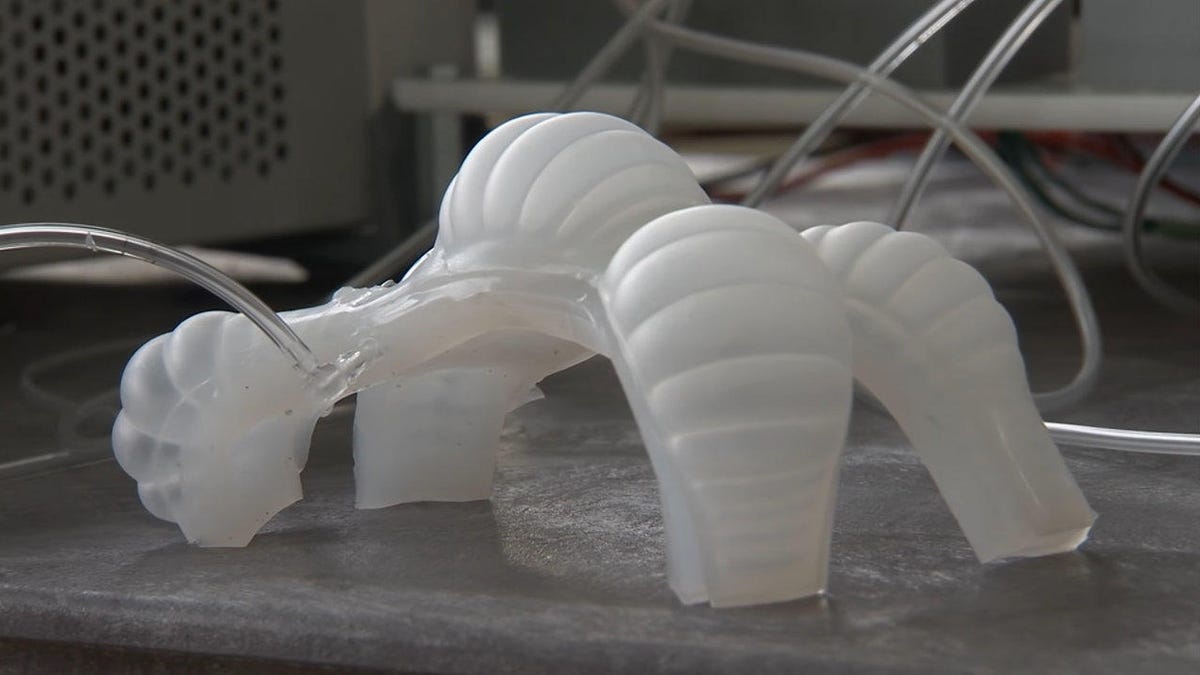NASA eyes soft robots for dirty jobs on the moon and Mars
I shall call him Squishy.
The future of robots in space might not look much like R2-D2 , Wall-E and Robby. They may look more like giant squishy worms.
NASA Langley Research Center interns Chuck Sullivan and Jack Fitzpatrick are developing soft robot designs that could one day handle "dangerous, dirty or dull" tasks in space, on the moon and even on Mars.
These robots don't have the sharp angles and hard surfaces of most sci-fi robots. The researchers are building robotic actuators with soft silicone exteriors that can bend, flex and expand.
"When you actuate the soft robot, it changes how you use the material properties," Fitzpatrick said. "A piece of rubber going from flat to the shape of a finger, it changes the material into something else." A video shows this concept in action.
The robots on display look like living, writhing creatures. They move based on the amount of air in their chambers. The researchers see a future where soft robots move across the surface of the moon and work together to create temporary shelters.
NASA's interest in soft robotics is part of a larger trend. MIT introduced a soft robo-fish in early 2018. Scientists are working on stretchable liquid metal, and the US Army Research Laboratory is investigating flexible robots inspired by invertebrates.
NASA's soft robots are a long way from traveling into orbit or off to our lunar neighbor, but they give a hint of enticing possibilities to come. I'm imagining worm-bots crawling across Mars, exploring rocky areas where our rovers fear to tread.


